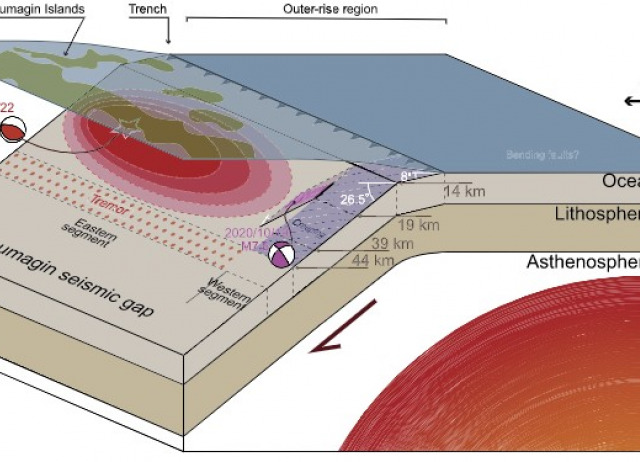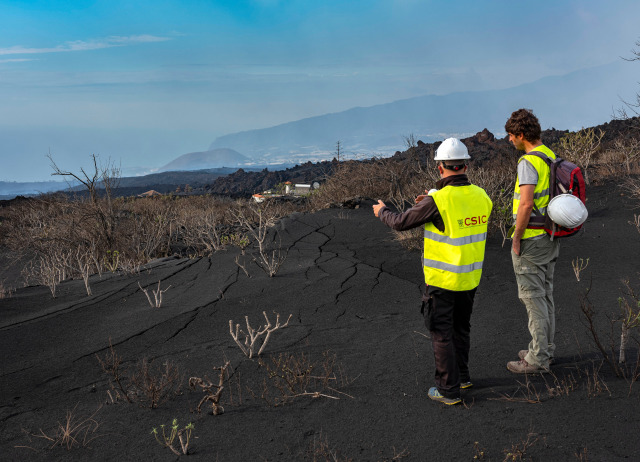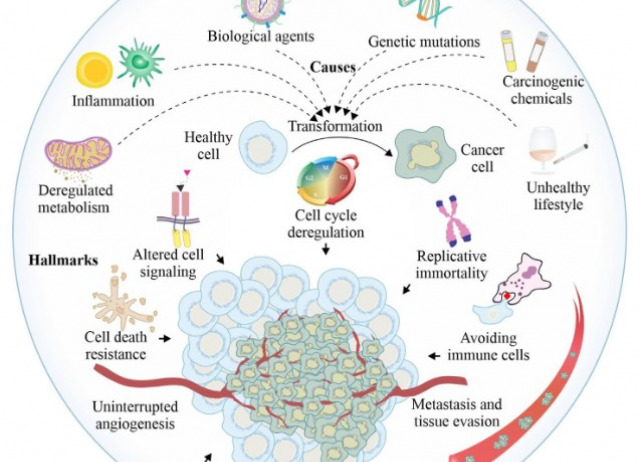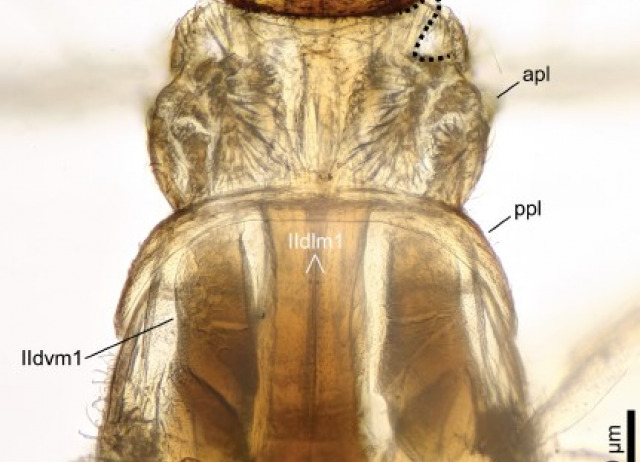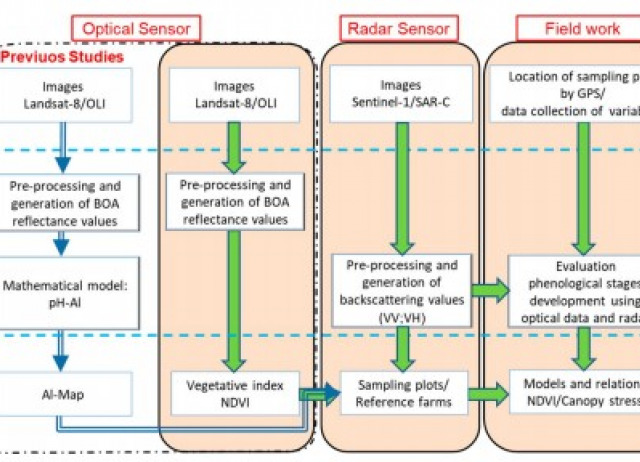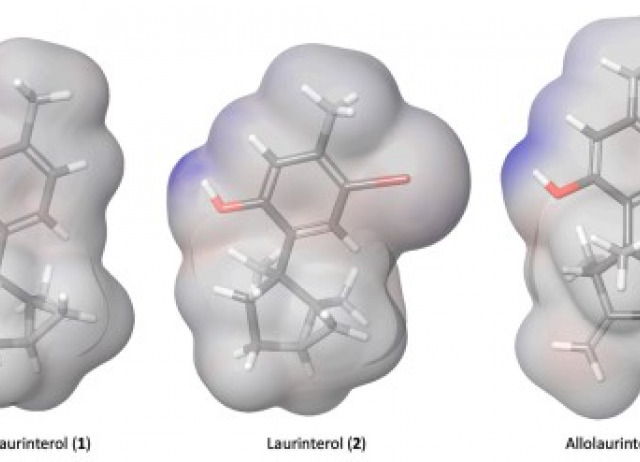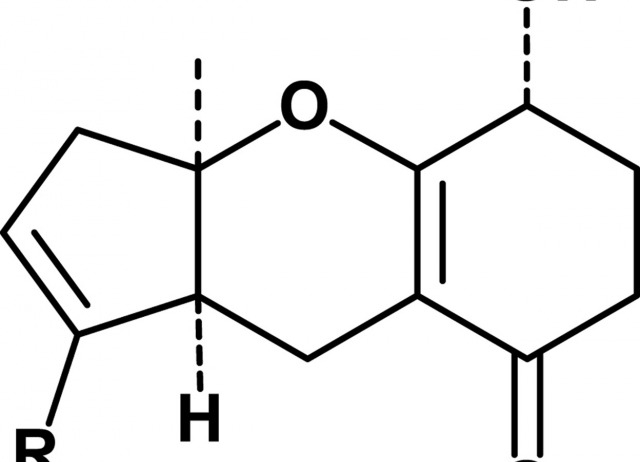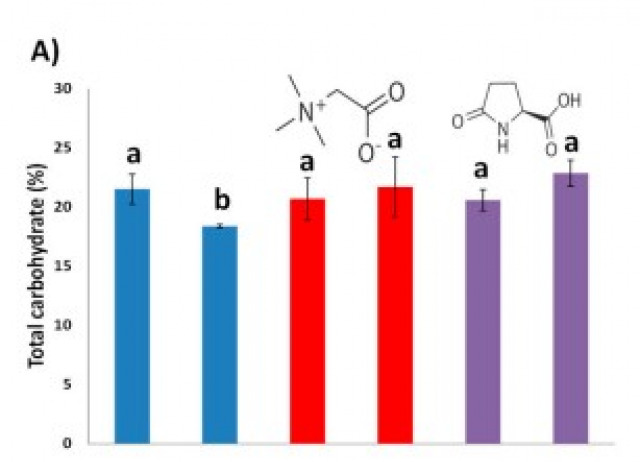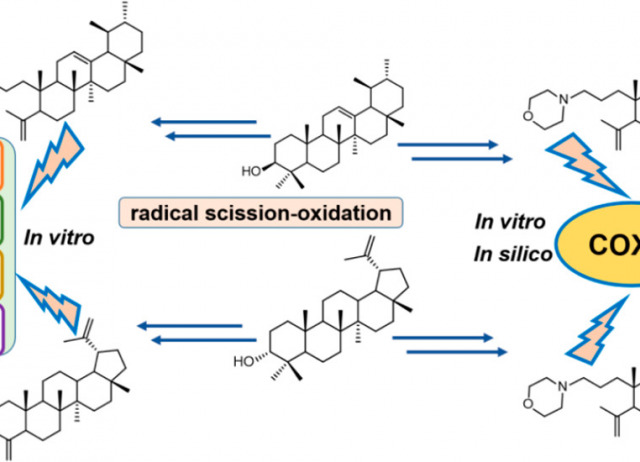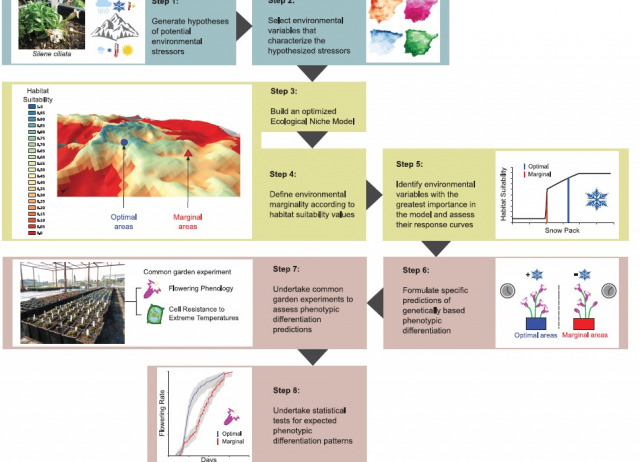
Linking ecological niche models and common garden experiments to predict phenotypic differentiation in stressful environments: Assessing the adaptive value of marginal populations in an alpine plant
Environmental variation within a species’ range can create contrasting selective pressures, leading to divergent selection and novel adaptations. The conservation value of populations inhabiting environmentally marginal areas remains in debate and is closely related to the adaptive potential in changing environments. Strong selection caused by stressful conditions may generate novel adaptations, conferring these populations distinct evolutionary potential and high conservation value under climate change. On the other hand, environmentally marginal populations may be genetically depauperate, with little potential for new adaptations to emerge. Here, we explored the use of ecological niche models (ENMs) linked with common garden experiments to predict and test for genetically determined phenotypic differentiation related to contrasting environmental conditions. To do so, we built an ENM for the alpine plant Silene ciliata in central Spain and conducted common garden experiments, assessing flowering phenology changes and differences in leaf cell resistance to extreme temperatures. The suitability patterns and response curves of the ENM led to the predictions that: (1) the environmentally marginal populations experiencing less snowpack and higher minimum temperatures would have delayed flowering to avoid risks of late-spring frosts and (2) those with higher minimum temperatures and greater potential evapotranspiration would show enhanced cell resistance to high temperatures to deal with physiological stress related to desiccation and heat. The common garden experiments revealed the expected genetically based phenotypic differentiation in flowering phenology. In contrast, they did not show the expected differentiation for cell resistance, but these latter experiments had high variance and hence lower statistical power. The results highlight ENMs as useful tools to identify contrasting putative selective pressures across species ranges. Linking ENMs with common garden experiments provides a theoretically justified and practical way to study adaptive processes, including insights regarding the conservation value of populations inhabiting environmentally marginal areas under ongoing climate change.
Morente-López, Javier; Kass, Jamie M.; Lara-Romero, Carlos; Serra-Diaz, Josep M.; Soto-Correa, José Carmen; Anderson, Robert P.; Iriondo, José M.
Subduction earthquakes controlled by incoming plate geometry: The 2020 M > 7.5 Shumagin, Alaska, earthquake doublet
In 2020, an earthquake doublet, a M7.8 on July 22nd and a M7.6 on October 19th, struck the Alaska-Aleutian subduction zone beneath the Shumagin Islands. This is the first documented earthquake doublet involving a megathrust event and a strike-slip event. The first event partially ruptured a seismic gap, which has not hosted large earthquakes since 1917, and the second event was unusual as it broke a trench-perpendicular fault within the incoming oceanic slab. We used an improved Bayesian geodetic inversion method to estimate the fault slip distributions of the major earthquakes using Interferometric Synthetic Aperture Radar (InSAR) wrapped phase and Global Navigation Satellite Systems (GNSS) offsets data. The geodetic inversions reveal that the Shumagin seismic gap is multi-segmented, and the M7.8 earthquake ruptured the eastern segment from 14 km down to 44 km depth. The coseismic slip occurred along a more steeply, 26◦ dipping segment, and was bounded up-dip by a bend of the megathrust interface to a shallower 8◦ dip angle connecting to the trench. The model for the M7.6 event tightly constrained the rupture depth extent to 19-39 km, within the depth range of the M7.8 coseismic rupture area. We find that the M7.6 event ruptured the incoming slab across its full seismogenic thickness, potentially reactivating subducted Kula-Resurrection seafloor-spreading ridge structures. Coulomb stress transfer models suggest that coseismic and/or postseismic slip of the M7.8 event could have triggered the M7.6 event. We conclude that the segmented megathrust structure and the location of intraslab fault structures limited the rupture dimensions of the M7.8 event and are responsible for the segmentation of the Shumagin seismic gap. Our study suggests that the western and shallower up-dip segments of the seismic gap did not fail and remain potential seismic and tsunami hazard sources. The unusual earthquake doublet provides a unique opportunity to improve our understanding of the role of the subducting lithosphere structure in the segmentation of subduction zones.
Yu, Jiang; González Méndez, Pablo José; Bürgmann, Roland.
Volcano-tectonic control of Cumbre Vieja
The 2021 Cumbre Vieja volcano eruption started on 19 September 2021 and ended after 85 days and 8 hours, becoming La Palma’s longest and most voluminous (more than 200 million m3) eruption in historical times. Because of the good monitoring effort, this eruption will allow the testing of a wide range of scientific ideas, from the importance of a possible 436-year-long supercycle of duration-decreasing eruptions to using the geophysical observations to understand how magma is stored and migrates within a vertically extended upper mantle and crustal magmatic system. These types of magmatic and volcanological information will transform volcano eruption hazard assessment and long-term planning. Moreover, a key research question remains as to why this eruption did not create a catastrophic volcano flank collapse as perhaps expected. The answer may be tied to its distinct volcano-tectonic features and, in particular, an unexpected fissure system that opened during the eruption’s last phase
González, Pablo J.
Cancer chemotherapy and beyond: Current status, drug candidates, associated risks and progress in targeted therapeutics
Cancer is an abnormal state of cells where they undergo uncontrolled proliferation and produce aggressive malignancies that cause millions of deaths every year. With the new understanding of the molecular mechanism(s) of disease progression, our knowledge about the disease is snowballing, leading to the evolution of many new therapeutic regimes and their successive trials. In the past few decades, various combinations of therapies have been proposed and are presently employed in the treatment of diverse cancers. Targeted drug therapy, immunotherapy, and personalized medicines are now largely being employed, which were not common a few years back. The field of cancer discoveries and therapeutics are evolving fast as cancer type-specific biomarkers are progressively being identified and several types of cancers are nowadays undergoing systematic therapies, extending patients’ disease-free survival thereafter. Although growing evidence shows that a systematic and targeted approach could be the future of cancer medicine, chemotherapy remains a largely opted therapeutic option despite its known side effects on the patient’s physical and psychological health. Chemotherapeutic agents/pharmaceuticals served a great purpose over the past few decades and have remained the frontline choice for advanced-stage malignancies where surgery and/or radiation therapy cannot be prescribed due to specific reasons. The present report succinctly reviews the existing and contemporary advancements in chemotherapy and assesses the status of the enrolled drugs/pharmaceuticals; it also comprehensively discusses the emerging role of specific/targeted therapeutic strategies that are presently being employed to achieve better clinical success/survival rate in cancer patients.
Anand, Uttpal; Dey, Abhijit; Chandel, Arvind K. Singh; Sanyal, Rupa; Mishra, Amarnath; Pandey, Devendra Kumar; De Falco, Valentina; Upadhyay, Arun; Kandimalla, Ramesh; Chaudhary, Anupama; Dhanjal, Jaspreet Kaur; Dewanjee, Saikat; Vallamkondu, Jayalakshmi; Pérez De La Lastra, José M.
A new cavernicolous assassin bug from the Canary Islands (Hemiptera: Reduviidae: Emesinae: Collartidini)
The Canary Archipelago is home to two species of obligately cavernicolous assassin bugs of the genus Collartida Villiers, 1949 (Hemiptera: Heteroptera: Reduviidae: Emesinae: Collartidini). These species are highly adapted for cave life, being blind and wingless. In the present study, we describe a new species of the genus, C. phantasma sp. nov. from the Federica mine in Gran Canaria. C. phantasma sp. nov. differs from the other two Collartida species found in the Canary Archipelago in that the male is fully winged, the female is wingless, and both sexes have well-developed eyes. We provide information regarding the new species’ habitat, its taxonomic affinities, and its ability to fly.
Davranoglou, Leonidas-Romanos; Baňař, Petr; Suárez, Daniel; Martín, Sonia; Naranjo, Manuel.
Mapping stressed wheat plants by soil aluminum efect using C‑band SAR images: implications for plant growth and grain quality
Under toxic aluminum (Al) levels in the soil, wheat (Triticum aestivum L.) sufers stress and plant growth is afected. A method for diagnosis of plants is proposed that includes the following as a strategy: to analyze total Al in the soil, employ satellite radar imagery and calculate a vegetation index. The objective of this research, conducted at the feld scale, was to explore how radar backscattering coefcients from a winter wheat canopy, combined with the normalized diference vegetation index (NDVI) and geographic information system (GIS) technology, can be used as a mapping tool for the variability of Al-stressed canopies. As a result, an analysis of covariance showed signifcant diferences, and the lowest plant height was obtained at a high level of soil Al, as well as the minimum grain weight and magnesium content. It was found that a simple model could be used to estimate plant height from the backscattering coefcient of vertical transmit-vertical receive polarization (σ°VV), with a strong correlation (r−0.84). In turn, a third-order polynomial regression model (R20.70) was proposed to estimate the NDVI from σ°VV. This model provided a good estimate of the NDVI at the stem elongation stage of growth (50 days after sowing). Detected NDVI patterns were associated with variation in canopy stress depending on polarimetric information, which, in turn, was related to soil Al levels. Thus, the maps derived from the model can monitor spatial variability, where NDVI values<0.68 indicate stressed areas. This study provides guidance for in-season stress spatial variability caused by Al.
Hernández, Mercedes; Borges, Andrés A.; Francisco‑Bethencourt, Desiderio.
Cyclolauranes as plausible chemical scaffold against Naegleria fowleri
Primary amoebic meningoencephalitis (PAM) is a central nervous system (CNS) disease caused by Naegleria fowleri that mainly affects children and young adults with fatal consequences in most of the cases. Treatment protocols are based on the combination of different antimicrobial agents, nonetheless there is the need to develop new anti-Naegleria compounds with low toxicity and full effects compared to the currently used drug combination. The marine environment is a well-established source of bioactive natural products. In this work, we have focused on the structure of Laurencia cyclolaurane-type sesquiterpenes as potential chemical model against Naegleria species. The effects of debromolaurinterol (1) to induce PCD/apoptosis-like events in Naegleria fowleri have been evaluated, revealing that this compound induced reduction of ATP production showing a decrease of 99.98% in treated parasite cells. A SAR analysis have been supported with molecular modeling and analysis of the in silico ADME/Tox properties of the Laurencia sesquiterpenes debromolaurinterol (1), laurinterol (2) and allolaurinterol (3), which reinforce cyclolaurane metabolites as plausible molecular models to develop PAM treatments.
Arberas-Jiménez, Íñigo; García-Davis, Sara; Rizo-Liendo, Aitor; Sifaoui, Inés; Quintana Morales, Ezequiel; Piñero, José E.; Lorenzo-Morales, Jacob; Díaz-Marreno, Ana R.; Fernández, José J.
Proposal for structural revision of several monosubstituted tricycloalternarenes
Cycloalternarenes are a group of meroterpenes isolated from epiphytic fungi with a mono-, bi, tri- or tetracyclic skeleton. We have detected in the bibliography a series of monosubstituted tricycloalternarenes with erroneous structures. Thus, in this work we make several proposals to correct the structures of nineteen 4-hydroxy-tricycloalternarenes, TCA 6a, TCA 11a2, (2E)- and (2Z)-TCA 12a, 2H-(2E)-TCA 12a, TCAs 9a and F2, methyl nor-tricycloalternarate, TCAs K, L, S–W, X2 and tricycloalterfurenes A-C, and four 6-hydroxy-tricycloalternarenes, TCA 12b, TCA 13b, tricycloalterfurene D and TCA F3. Moreover, the graphic representation of TCA 14b and TCAs 15b–18b had been corrected. In addition, we have suggested that mono-hydroxylated tricycloalternarenes can only exist in nature substituted at the 4α- or 6β-position (4R- or 6R-configuration), which could also be explained considering biogenetic reasons. We have also determined the C-4 and C-6 configuration of several monosubstituted tricycloalternarenes, whose planar structure had been previously determined. Thus, compounds of the “series a” such as TCAs 1a-8a, 11a and ACTG-toxin H have a 4R-configuration, whilst in the “series b” TCAs 3b–7b and TCAs 9b–11b possess a 6R-configuration.
Fraga, Braulio M.; Díaz, Carmen E.
Applying Biostimulants to Combat Water Deficit in Crop Plants: Research and Debate
Climate change has increased the severity of drought episodes by further reducing precipitation in vulnerable zones. Drought induces a substantial decrease in agricultural water, reducing crop yields. Consequently, addressing water consumption can increase farmers’ profits. This work describes lab-to-field research in Zea mays, using two biostimulants: glycine betaine (GB) and Lpyroglutamic acid (PG). The biostimulant optimal dosages were selected using a hydroponic system with 20% polyethylene glycol and nursery experiments under water-deficit irrigation. The established dosages were evaluated in field trials in which irrigation was reduced by 20%. Laboratory biostimulant optimisation showed in stressed treated seedlings (GB 0.1 mM; PG 1 mM) an increased dry weight, relative growth rate and water use efficiency, reducing seedling growth loss between 65 and 85%, respectively. Field trials using a GB-optimised dosage showed an increase in plants’ growth, grain yield and flour Ca content. In addition, grain flour carbohydrate content and protein remained similar to control well-watered plants. Finally, the economic aspects of biostimulant treatments, water consumption, water sources (ground vs. desalinated) and grain biomass were addressed. Overall, GB treatment demonstrated to be a valuable tool to reduce water consumption and improve farmers’ earnings.
Jiménez-Arias, David; Hernándiz, Alba E.; Morales-Sierra, Sarai; García-García, Ana L.; García-Machado, Francisco J.; Luis, Juan C.; Borges, Andrés A.
Synthesis, Biological Evaluation, and Molecular Docking Study of 3-Amino and 3-Hydroxy-seco A Derivatives of α-Amyrin and 3-Epilupeol as Inhibitors of COX-2 Activity and NF-kB Activation
In this study, a series of novel 3-seco-A derivatives of the natural triterpenes α-amyrin (1) and 3-epilupeol (2) were synthesized by a one-pot radical scission–oxidation procedure and evaluated in vitro and in vivo for their capacity to inhibit the inflammatory process. For the in vitro studies, the trans-4-hydroxy-l-proline methyl ester derivatives (1f and 2f) were consistently effective in inhibiting NO, IL-6, and TNF-α secretion, as well as inhibition of NF-κB activation, in RAW cells stimulated by LPS. The further in vivo anti-inflammatory study revealed that the trans-4-hydroxy-l-proline methyl ester derivatives (1f and 2f), together with 1g, were the most effective in inhibiting TPA-induced edema. Interestingly, the α-amyrin derivatives were the most potent inhibitors of COX-2, but inhibited COX-1 only to some extent. The hydroxyl derivative (1c) was selective for COX-2 inhibition (66.3 ± 1.1% at 17.5 μM) without affecting the COX-1 isoform and did not present toxicity. Molecular docking studies revealed that these compounds bind with their polar region in the cavity over Arg-120, and their lipophilic part is orientated to the HEM cofactor similarly to the natural substrate arachidonic acid in the catalytic site of COX-2. These results indicated that seco-A ursane derivatives could be considered promising candidates for the future development of selective NF-κB and COX-2 inhibitors.
Romero-Estrada, Antonio; Boto, Alicia; González-Christen, Judith; Romero-Estudillo, Iván; Garduño-Ramírez, María Luisa; Said Razo-Hernández, Rodrigo; Marquina, Silvia; Maldonado-Magaña, Amalia; Columba-Palomares, María C.; Sánchez-Carranza, Jessica Nayelli; Álvarez, Laura.
